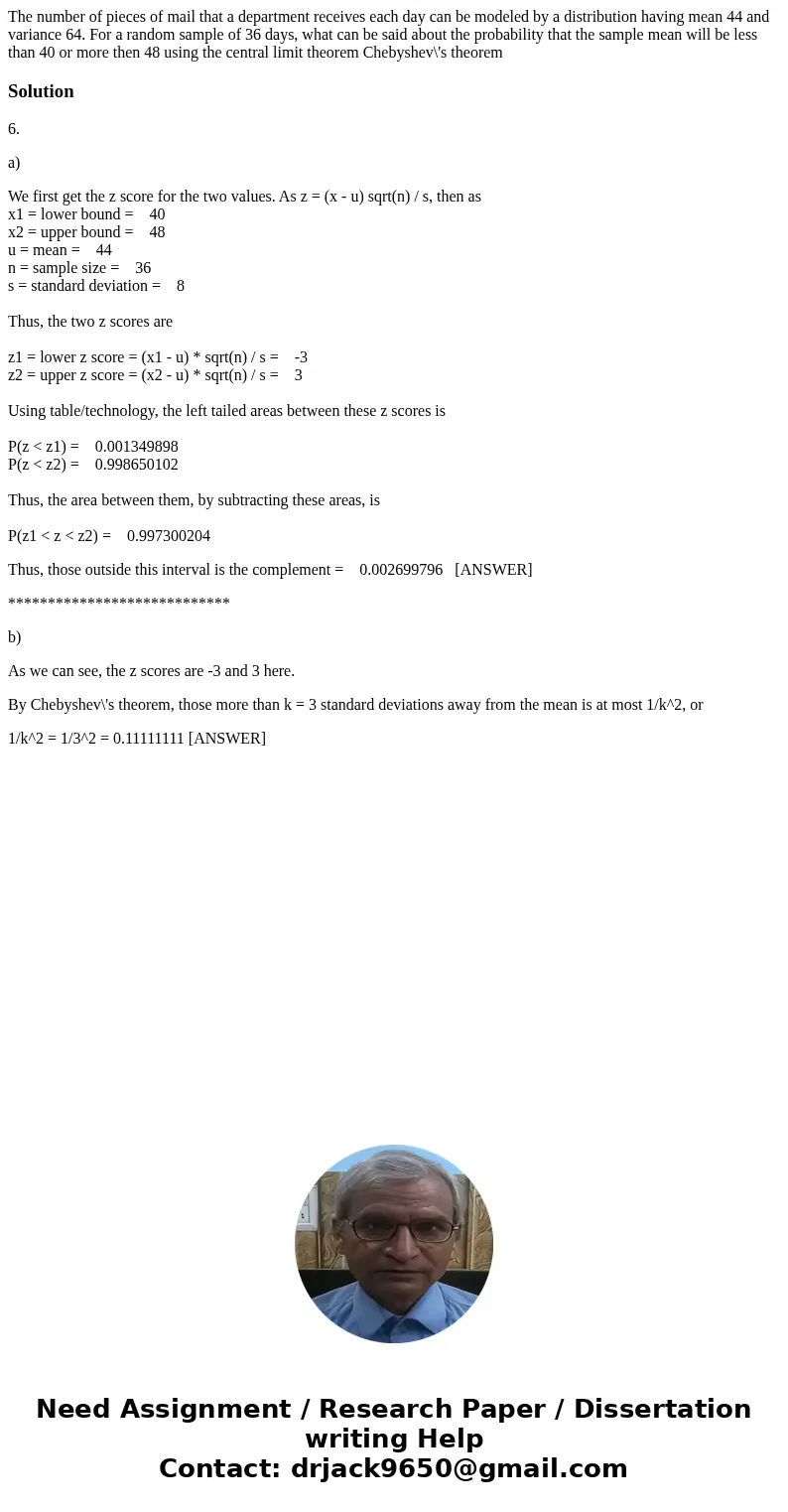The number of pieces of mail that a department receives each
Solution
6.
a)
We first get the z score for the two values. As z = (x - u) sqrt(n) / s, then as
x1 = lower bound = 40
x2 = upper bound = 48
u = mean = 44
n = sample size = 36
s = standard deviation = 8
Thus, the two z scores are
z1 = lower z score = (x1 - u) * sqrt(n) / s = -3
z2 = upper z score = (x2 - u) * sqrt(n) / s = 3
Using table/technology, the left tailed areas between these z scores is
P(z < z1) = 0.001349898
P(z < z2) = 0.998650102
Thus, the area between them, by subtracting these areas, is
P(z1 < z < z2) = 0.997300204
Thus, those outside this interval is the complement = 0.002699796 [ANSWER]
****************************
b)
As we can see, the z scores are -3 and 3 here.
By Chebyshev\'s theorem, those more than k = 3 standard deviations away from the mean is at most 1/k^2, or
1/k^2 = 1/3^2 = 0.11111111 [ANSWER]

 Homework Sourse
Homework Sourse